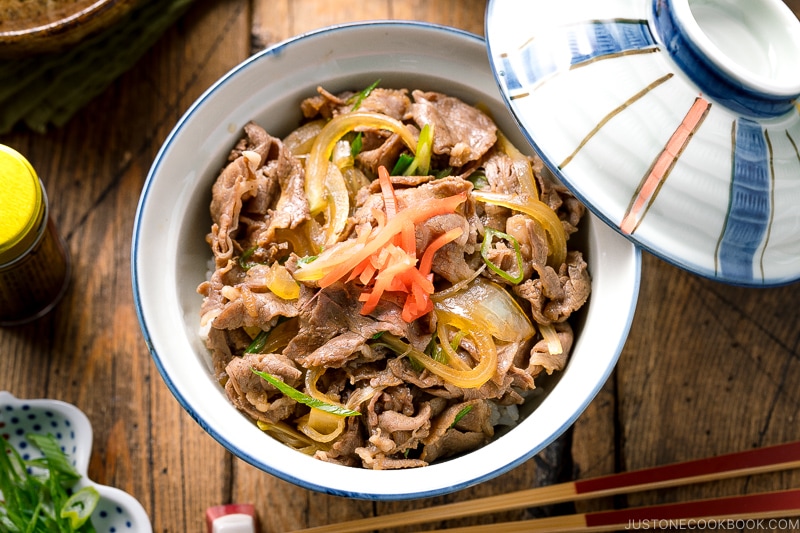
With thinly sliced beef and tender onions simmered in a savory-sweet sauce, Gyudon or Japanese Beef Rice Bowl is synonymous with comfort. This simple and delicious dish, served over hot steamed rice, has been a staple in Japanese cuisine for over 150 years! It’s a perfect quick meal for a busy weeknight!
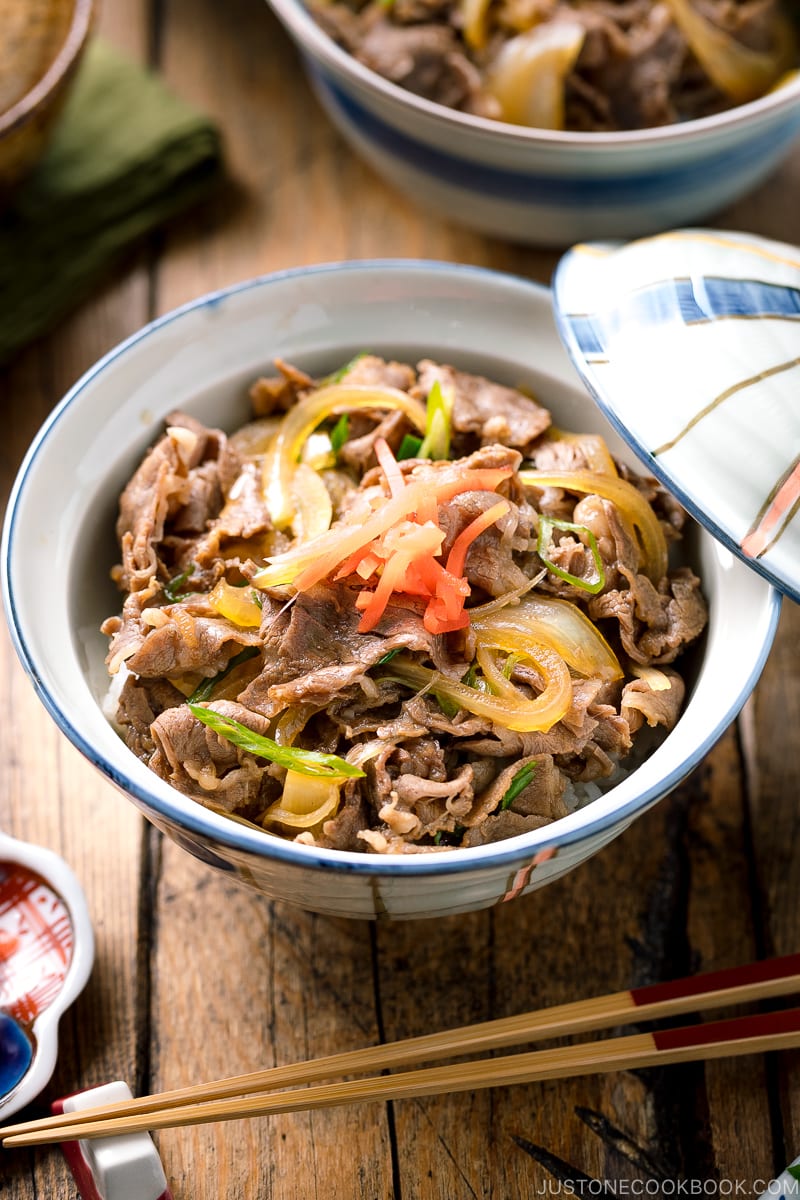
Gyudon (牛丼) is a classic comfort food that has held its place in Japanese cuisine for over 150 years. Not only is this hearty rice bowl extremely simple to put together, but it’s also famous for being a quick, nutritious meal that never fails to satisfy.
While every household in Japan makes gyudon a little differently, the core ingredients remain the same: thin slices of beef, onion, and a sweet and savory sauce served over steamed rice. Today, I’ll show you how I make this weeknight favorite at home.
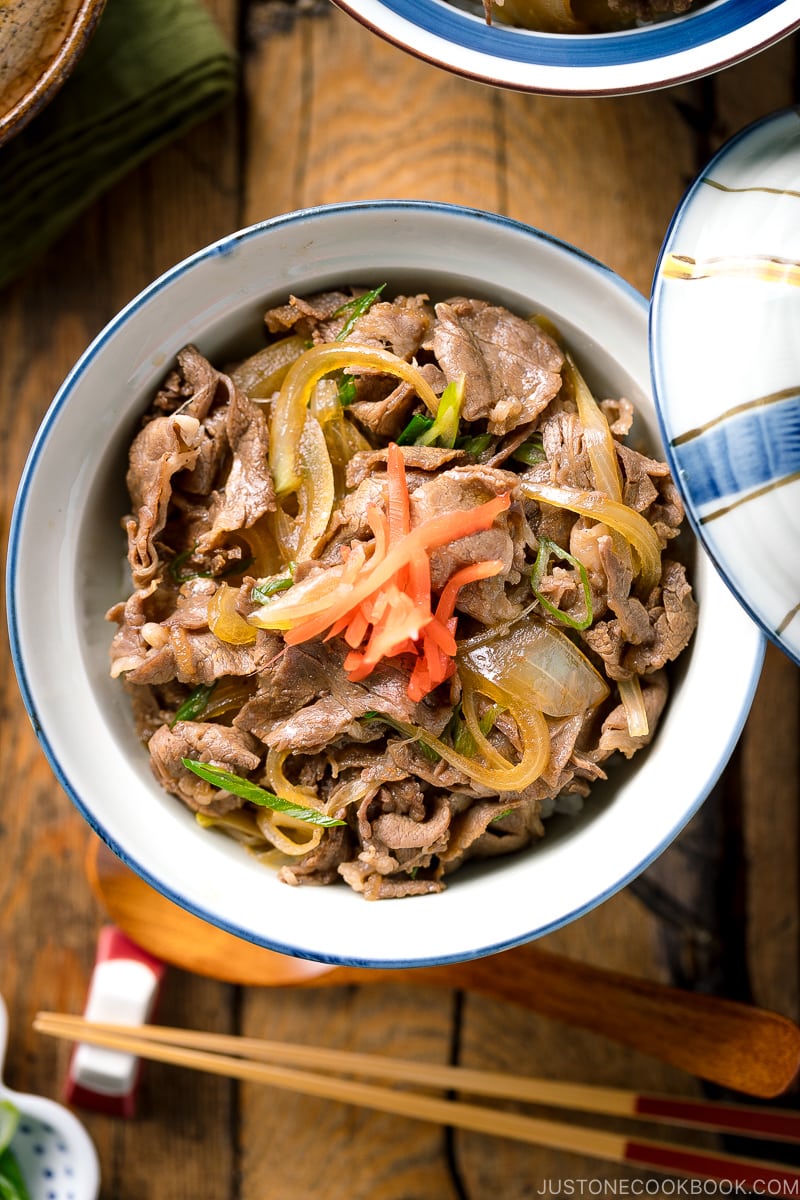
What is Gyudon (Japanese Beef Bowl)?
Like other donburi, Gyudon, or Japanese Beef Bowl, is always served over a warm bowl of freshly steamed rice. “Gyu” (牛) translates to “beef,” while “Don” (丼) refers to the type of bowl it’s served in.
The gyudon that we know and love today originated from a beef hot pot dish called “gyunabe” (牛鍋) during Japan’s Meiji Era (1868-1912). Up until this point, Japanese people were strictly prohibited from eating beef for both religious and practical reasons. Consuming meat went against Buddhist philosophies, and eating farm animals that were useful for work was largely discouraged.
Once Western culture arrived in Japan in the late 19th century, gyunabe—beef and onion stewed with miso paste—became extremely popular. The chef of an izakaya called Isekuma in my hometown of Yokohama was the first to serve gyunabe in 1862! People began pouring their leftover gyunabe broth over rice, and soon restaurants began to serve this as a cheaper alternative called “gyumeshi” (牛飯).
In the late 1800s, Eikichi Matsuda finally coined the name “gyudon.” Matsuda was the owner of Japan’s most famous Tokyo-based beef bowl chain, Yoshinoya. If you want to make gyudon just like they do at Yoshinoya, I have a recipe here.
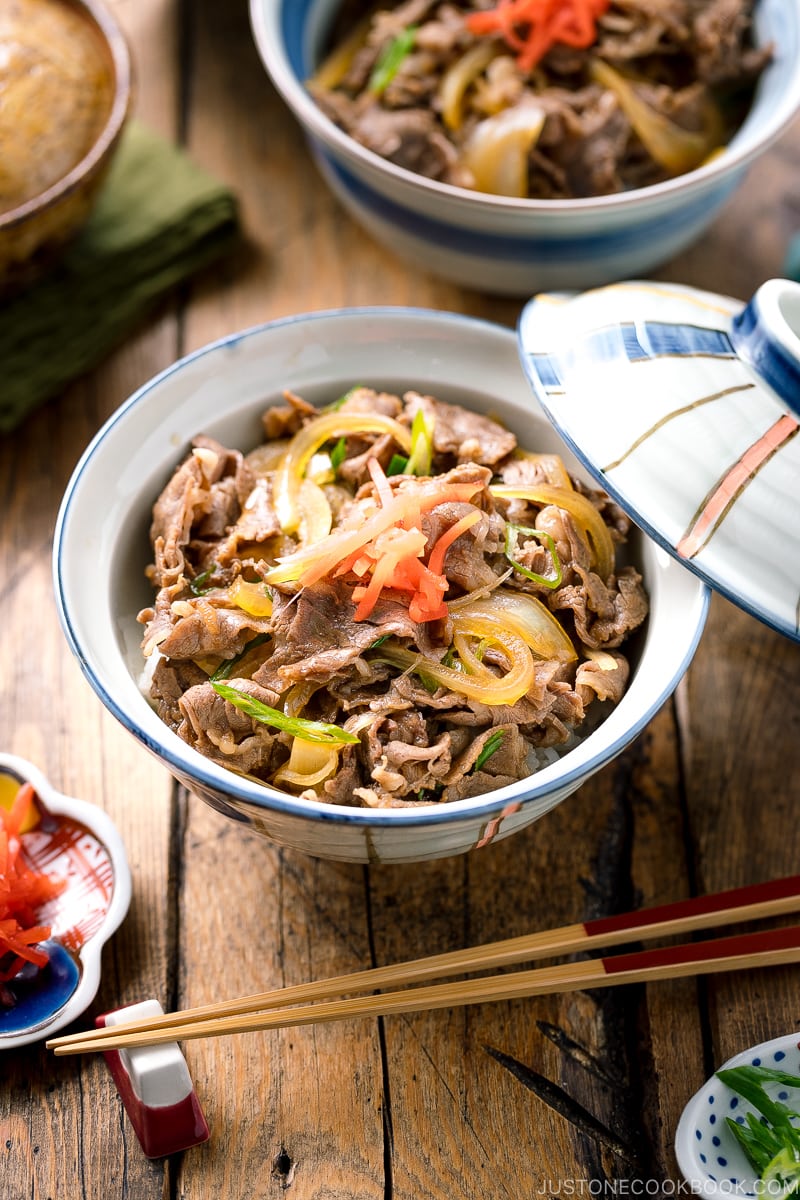
Ingredients for Japanese Beef Bowl
Gyudon in Japan is a quick, tasty meal that is also budget-friendly. It was most popular among business people and young, single men before gaining popularity among the general Japanese public. The ingredients to make this one-pot dish at home are simple.
- Thinly sliced beef: I recommend chuck or rib eye for this recipe. The paper-thin slices are essential for achieving authentic gyudon (too thick, and your beef will be chewy), and you can often find packages of thin-cut beef at Japanese or Asian supermarkets. Alternatively, you can always slice your own.
- Onion: Sliced onions add sweetness to the dish and perfectly pair with tender beef.
- Sauce: The sauce is a harmonious blend of sweet and savory, made with dashi (Japanese soup stock), sake, mirin, soy sauce, and sugar. It is so simple yet highly effective in creating robust flavor!
- Garnish: green onions for the color and shichimi togarashi for a spicy kick.
How to Make the Best Gyudon
- Cut the onion, green onions, and beef.
- Without turning on the stove, place the sauce ingredients, sliced onions, and beef in a large frying pan. Then, turn on the heat and start cooking.
- Serve the simmered beef and onion over steamed rice in large bowls.
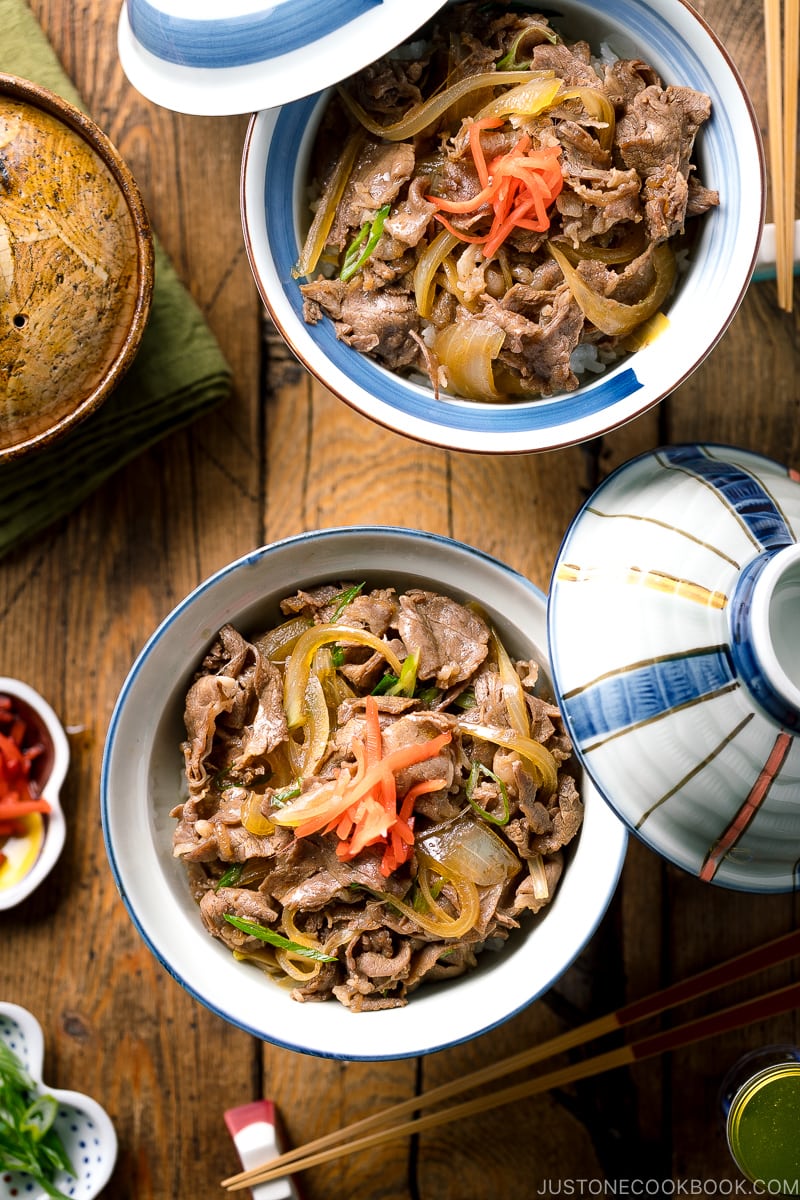
Cooking Tips
- Thinly slice the onion so it becomes tender and sweeter quickly. When cooked, the onion imparts a natural sweetness to the dish.
- Use good quality beef. Well-marbled beef will not become chewy after simmering in the sauce. I highly recommend ribeye for gyudon. It’s also easy to thinly slice your own meat. For well-marbled beef, it’s easier to flash-freeze and cut the semi-frozen meat.
- Make extra dashi (Japanese soup stock) so you can use it for gyudon and miso soup to go with the meal. I recommend making dashi either from scratch or with a dashi packet.
- Cook more rice than usual. Rice bowl dishes (or “donburi”) typically serve more rice per person to go with the food on top. Therefore, prepare a little bit more than usual. I always make 1½ rice cooker cups for two servings and 3 rice cooker cups for four servings.
- Don’t overcook the beef, especially if your meat is not well-marbled. You don’t want chewy meat. As soon as the beef is no longer pink, stop cooking. If the meat is well-marbled, you can let it simmer slightly longer to allow the meat to absorb more flavors from the sauce.
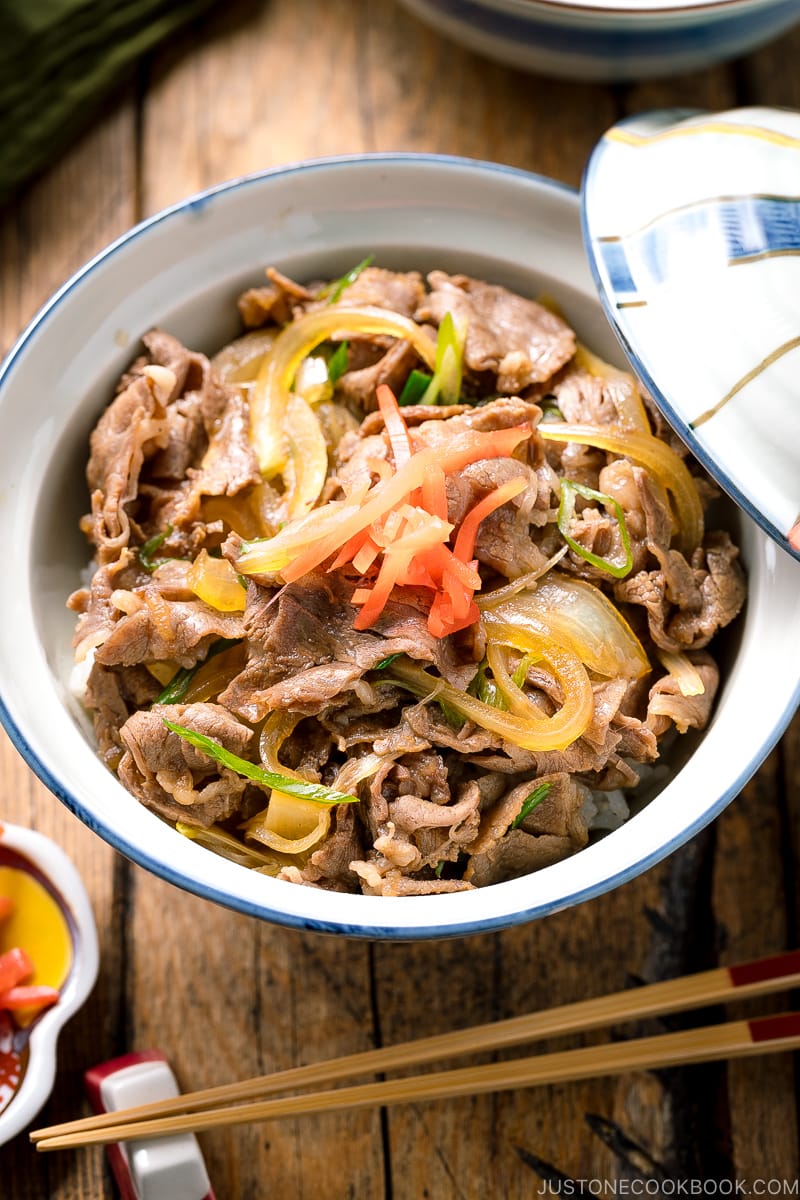
Popular Gyudon Variations
1. Gyudon with eggs
In Japan, we occasionally serve gyudon with a different type of eggs.
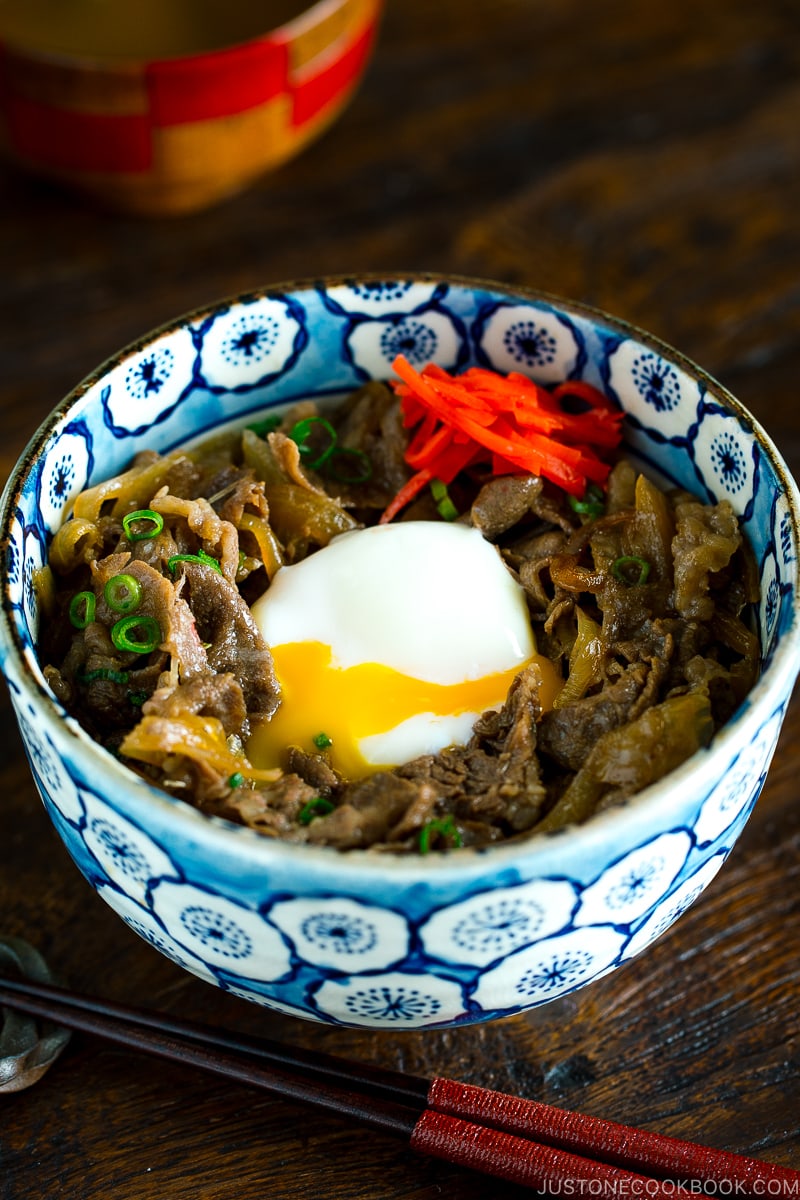
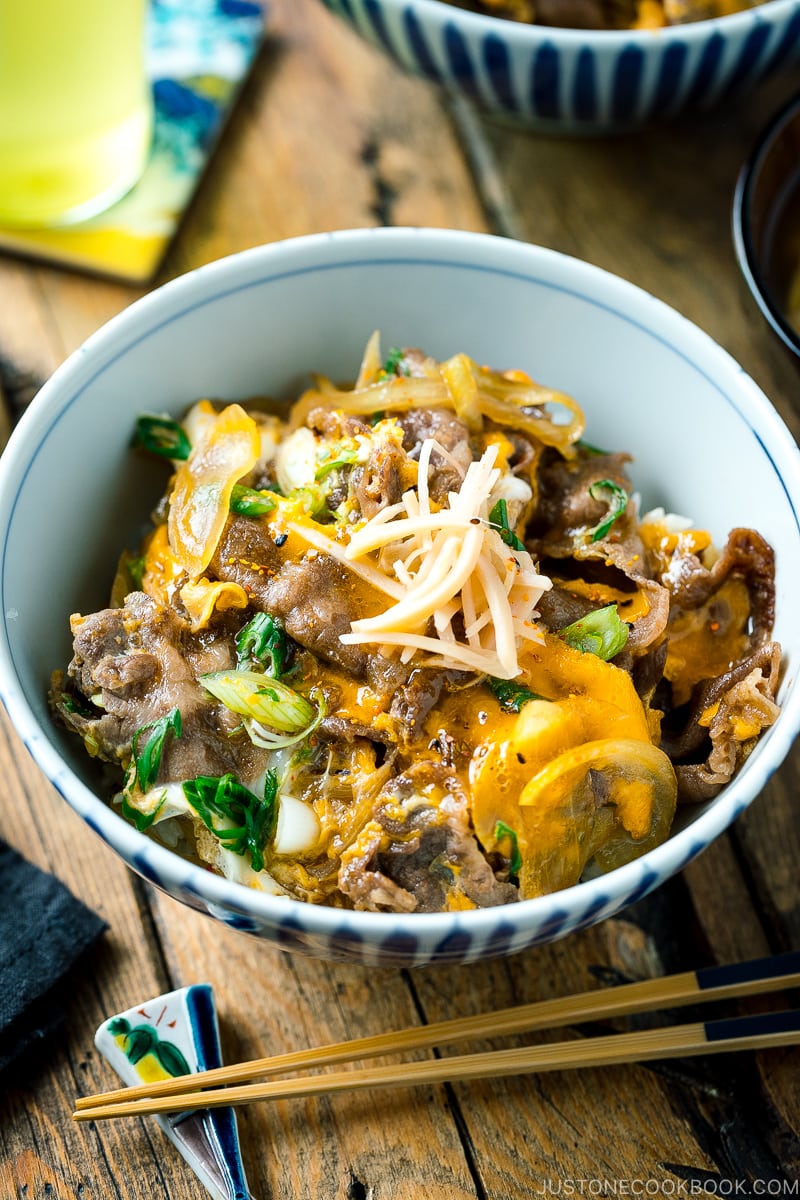
- Tsukimi Gyudon (お月見牛丼) – We place a raw egg yolk in the center of the simmered beef.
- Gyudon with Onsen Tamago (温玉のせ牛丼)- We place a poached egg in the center of the simmered beef.
- Tanindon (他人丼) or Gyutojidon (牛とじ丼) – Right before finishing cooking, drizzle beaten eggs over the simmered beef and cook covered until eggs are just set (In Japan, eggs are served slightly more runny).
For the first two variations of gyudon, when you’re ready to eat, break the yolk and mix it with the beef and onions to add a layer of richness to the meal.
The last option gives a nice layer of fluffy egg to the beef mixture. You can read more about it in my Tanindon post.
2. Kansai Sukiyaki-Style Gyudon
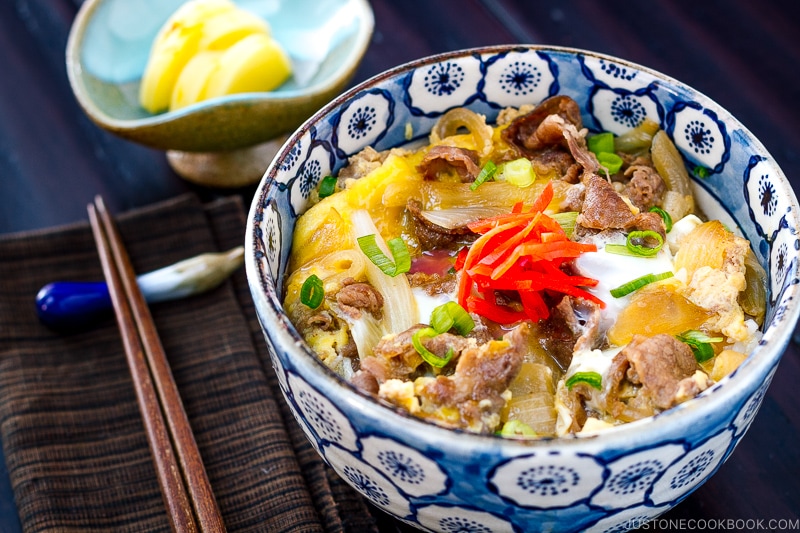
If you’re a long-time JOC fan, you’re familiar with my gyudon recipe and the image above, which I originally shared in 2011.
This is how my grandmother and mother made their gyudon. Since they are from the Kansai area (my grandma was from Nara and moved to Osaka where my mom was raised), they cooked gyudon like they made their Kansai-style sukiyaki. The signature of this style is to sprinkle sugar on the thinly sliced beef while it’s still raw and cook the meat first before simmering it with other seasonings.
Unlike the Kanto-style gyudon where we simmer beef and onion in dashi (Japanese soup stock), Kansai-style gyudon does not always require dashi and is cooked with just the seasonings; Therefore, the flavor is more intense.
Since my grandmother and mother’s gyudon recipe is not the typical gyudon recipe that people often seek, I’ve decided to update this post with a more standard gyudon recipe.
So, if you would like to make my Gyudon recipe from 2011, or Kansai Sukiyaki-Style Gyudon, simply skip the dashi from the ingredients below, and here are the cooking steps:
- Stir-fry onions with a tablespoon of oil (not listed in the recipe) until tender.
- Add beef and sugar (using the same amount as specified in the recipe) and quickly stir to combine.
- Add sake, mirin, and soy sauce (again, using the same amount in the recipe) and cook until the meat is no longer pink.
- Optionally, slowly drizzle a thin stream of the beaten eggs over the beef (Do not mix the egg with the beef) and add the green onions on top. Cook covered on medium-low heat until the egg is almost set or done to your liking (but don’t overcook it).
- Serve over steamed rice, and enjoy!
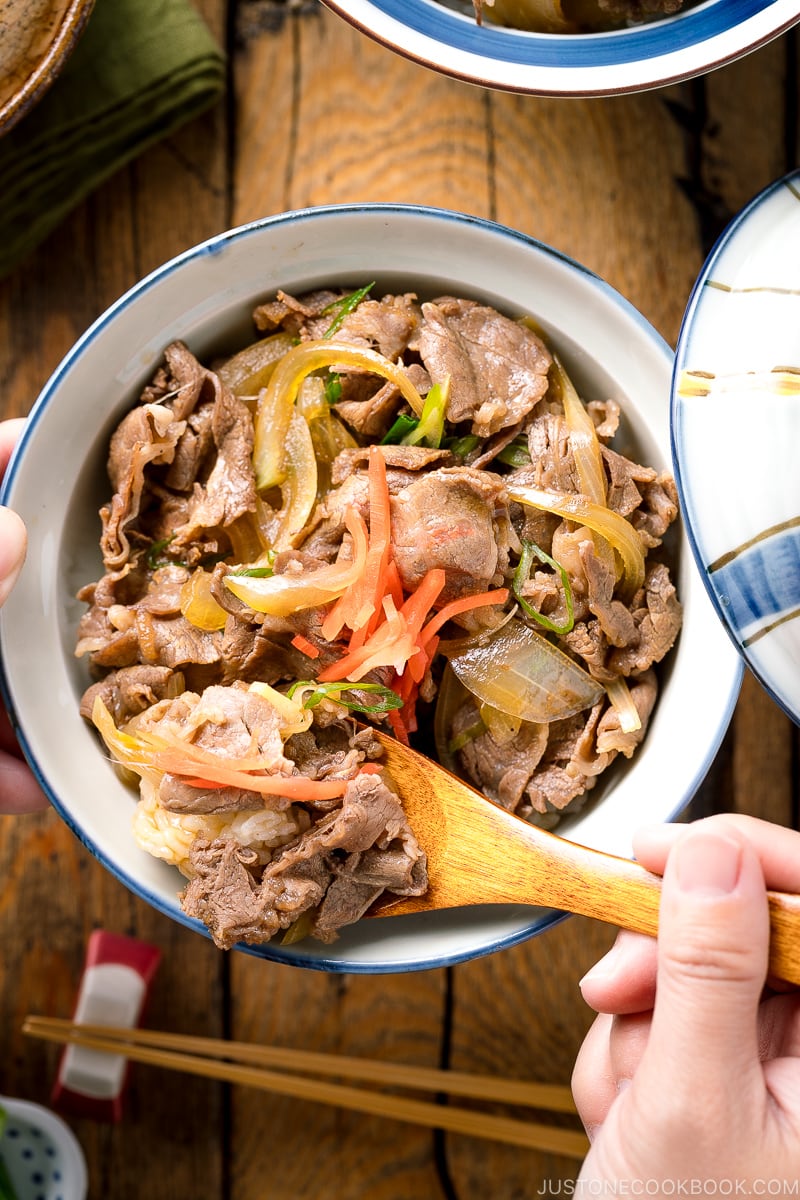
What is the Best Rice Cooker
To make the perfect rice for gyudon, I like to use my Zojirushi NP-NWC10XB Rice Cooker. It makes fluffy rice every time and is the best Japanese rice cooker I’ve ever used! You can get it on Amazon for $458.29, and it’s well worth it if you cook a lot of rice.
Popular Donburi Recipes

Wish to learn more about Japanese cooking? Sign up for our free newsletter to receive cooking tips & recipe updates! And stay in touch with me on Facebook, Pinterest, YouTube, and Instagram.
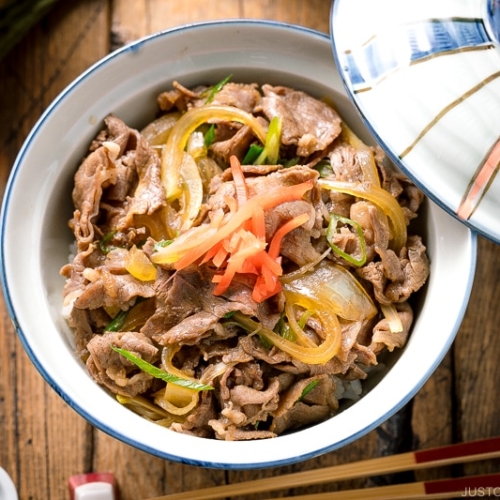
Gyudon (Japanese Beef Rice Bowl)
With thinly sliced beef and tender onions simmered in a savory-sweet sauce, Gyudon or Japanese Beef Rice Bowl is synonymous with comfort. This simple and delicious dish served over hot steamed rice has been a staple in Japanese cuisine for over 150 years. It‘s a perfect quick meal for a busy weeknight!
Ingredients
Prevent your screen from going dark
Instructions
To Prepare the Ingredients
-
First, thinly slice ½ onion.
-
Next, cut 1 green onions/scallions diagonally into thin slices. Set aside.
-
Then, take out ½ lb thinly sliced beef (chuck or ribeye) from the freezer. Cut the semi-frozen sliced meat into pieces 3 inches (7.6 cm) wide.
-
In a large frying pan (do not turn on the heat yet), add ½ cup dashi (Japanese soup stock), 2 Tbsp sake, 2 Tbsp mirin, 3 Tbsp soy sauce, and 1 Tbsp sugar. Mix to combine.
-
Next, add the onion slices and spread them throughout the pan, separating the onion layers.
-
Then, add the meat on top of the onions. Separate the thin slices of beef so the meat covers the onions.
To Serve
-
Divide 2 servings cooked Japanese short-grain rice into large donburi bowls. Then, drizzle some of the pan sauce on top of the rice.
-
Put the beef and onion mixture on top of the rice. If you’d like, drizzle additional remaining sauce on top. Top the Gyudon with pickled red ginger (beni shoga or kizami beni shoga). Enjoy!
Nutrition
Nutrition Facts
Gyudon (Japanese Beef Rice Bowl)
Amount per Serving
% Daily Value*
* Percent Daily Values are based on a 2000 calorie diet.
Editor’s Note: The post was originally published on January 13, 2011. The content and images were updated and the recipe was revised on April 17, 2022. The post was republished with a new video on April 5, 2024.





